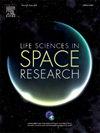Long duration space missions: Challenges and prospects in sustaining humans in space
IF 2.8
3区 生物学
Q2 ASTRONOMY & ASTROPHYSICS
引用次数: 0
Abstract
The space environment presents extreme conditions for the human body. Exposure to such challenging conditions may lead to both short- and long-term health problems. Microgravity and ionizing radiation levels are two major stressors influencing humans in space. Non-terrestrial gravity imposes deleterious effects on human physiology, thereby creating obstacles for long-term space missions. This review explores how microgravity and space radiation influence the physiological well-being of space travelers. Molecular and systemic effects of these stressors on gastrointestinal, cardiovascular, neuro-ocular, and musculoskeletal systems have been discussed. Moreover, the countermeasures in vogue such as exercise, nutrition, and pharmacological interventions, which are critical for maintaining astronaut health have been documented. Additionally, this review highlights the role of cutting-edge health technologies in space sciences research, offering a visionary approach for monitoring, prevention, and treatment of spaceflight-induced disorders. Finally, the review presents a vision, emphasizing the relevance of the current state-of-art from a futuristic perspective, where extreme conditions necessitate enhanced physiological resilience and human performance optimization. Tapping such strategies can help in improving the health, adaptability, and endurance of humans during long-term space missions.
长期太空任务:在太空中维持人类生存的挑战和前景
太空环境为人体提供了极端条件。暴露在这种具有挑战性的条件下可能导致短期和长期的健康问题。微重力和电离辐射水平是影响人类在太空生活的两个主要压力源。非地球重力对人体生理造成有害影响,从而对长期太空任务造成障碍。本文综述了微重力和空间辐射对太空旅行者生理健康的影响。这些应激源对胃肠道、心血管、神经眼和肌肉骨骼系统的分子和系统影响已被讨论。此外,目前流行的对策,如运动、营养和药物干预,对维持宇航员的健康至关重要,已被记录在案。此外,本综述强调了尖端卫生技术在空间科学研究中的作用,为监测、预防和治疗空间飞行引起的疾病提供了一种有远见的方法。最后,综述提出了一个愿景,强调了从未来的角度来看当前技术状况的相关性,在极端条件下需要增强生理弹性和人类性能优化。利用这些策略可以帮助改善人类在长期太空任务中的健康、适应能力和耐力。
本文章由计算机程序翻译,如有差异,请以英文原文为准。
求助全文
约1分钟内获得全文
求助全文
来源期刊

Life Sciences in Space Research
Agricultural and Biological Sciences-Agricultural and Biological Sciences (miscellaneous)
CiteScore
5.30
自引率
8.00%
发文量
69
期刊介绍:
Life Sciences in Space Research publishes high quality original research and review articles in areas previously covered by the Life Sciences section of COSPAR''s other society journal Advances in Space Research.
Life Sciences in Space Research features an editorial team of top scientists in the space radiation field and guarantees a fast turnaround time from submission to editorial decision.
 求助内容:
求助内容: 应助结果提醒方式:
应助结果提醒方式:


